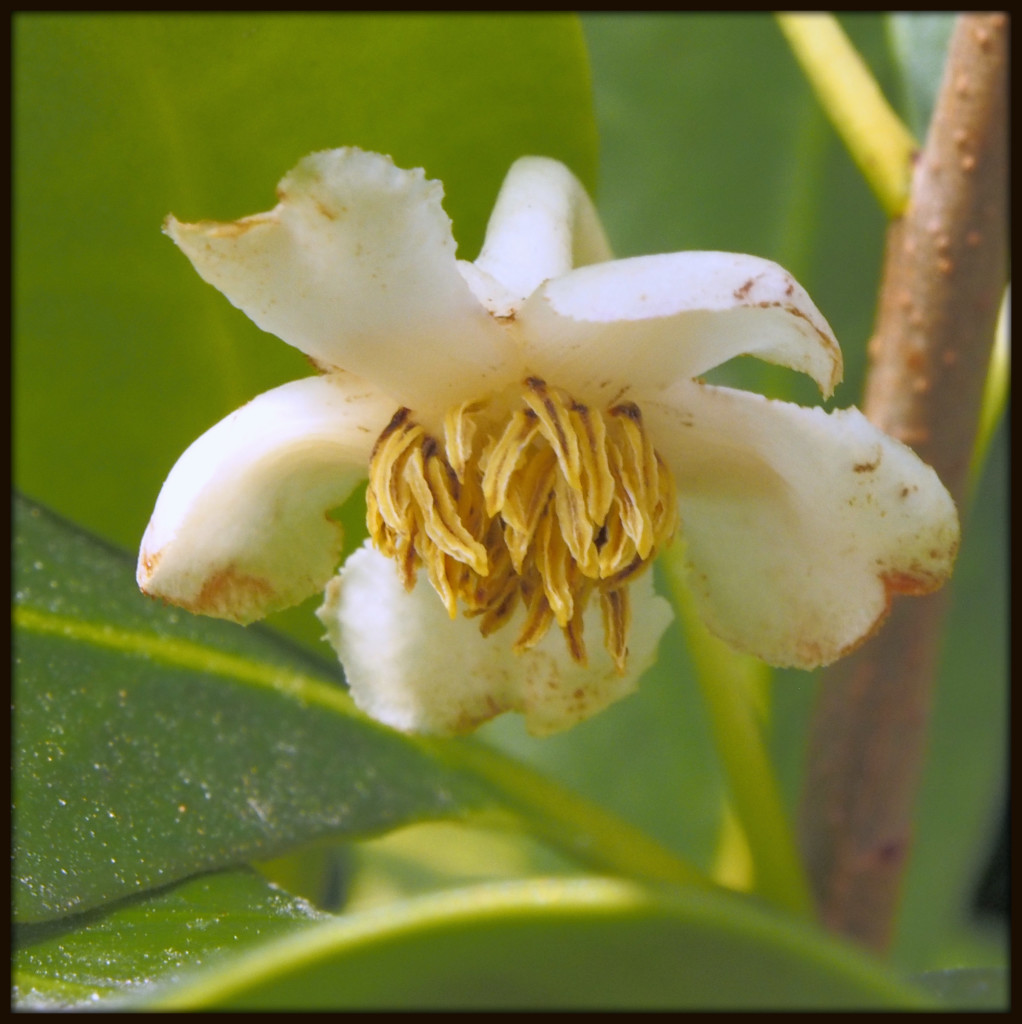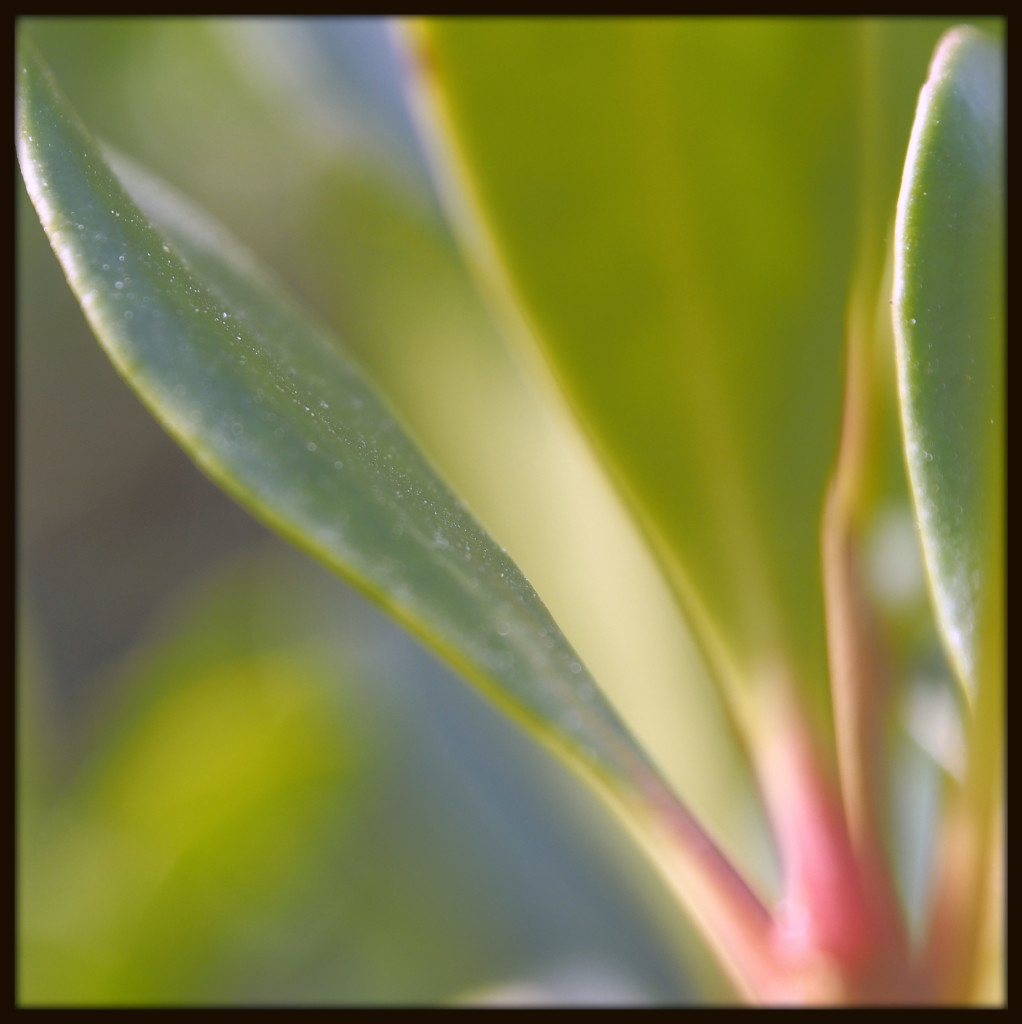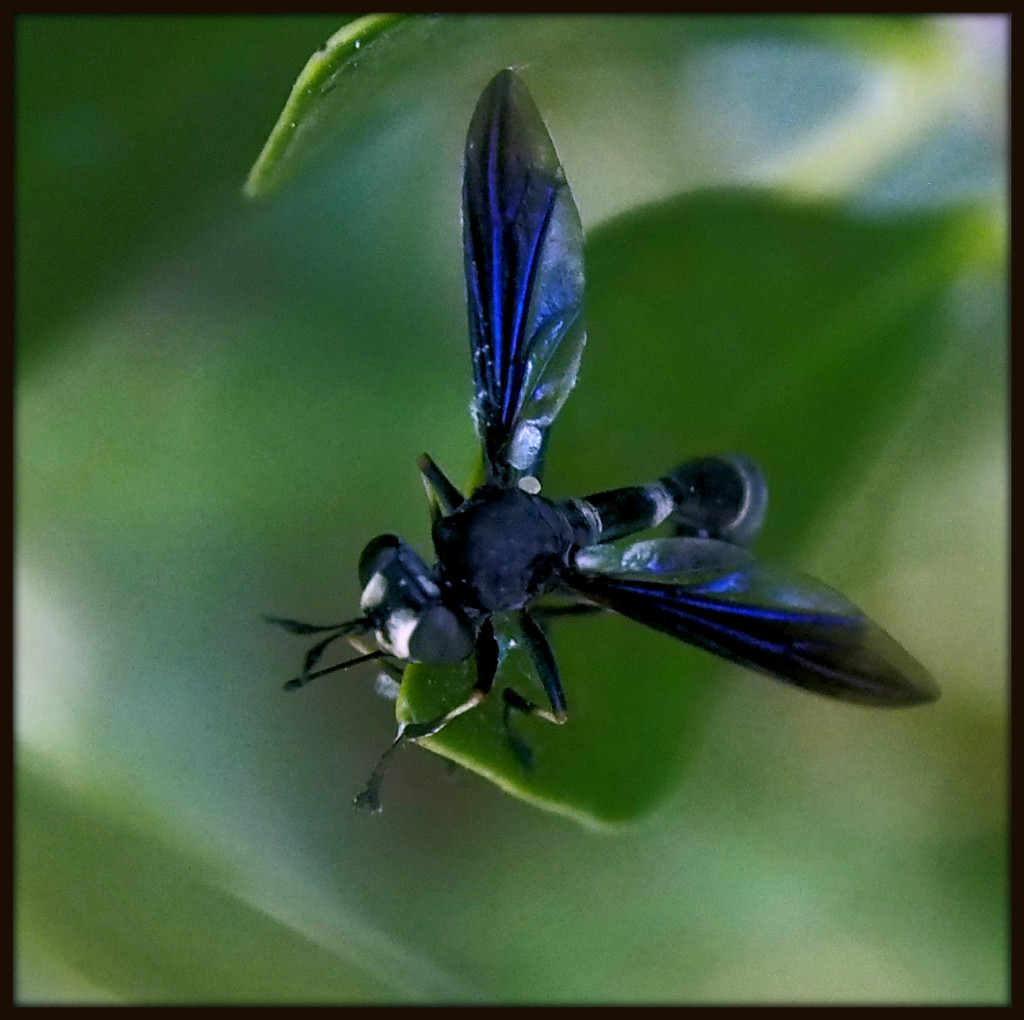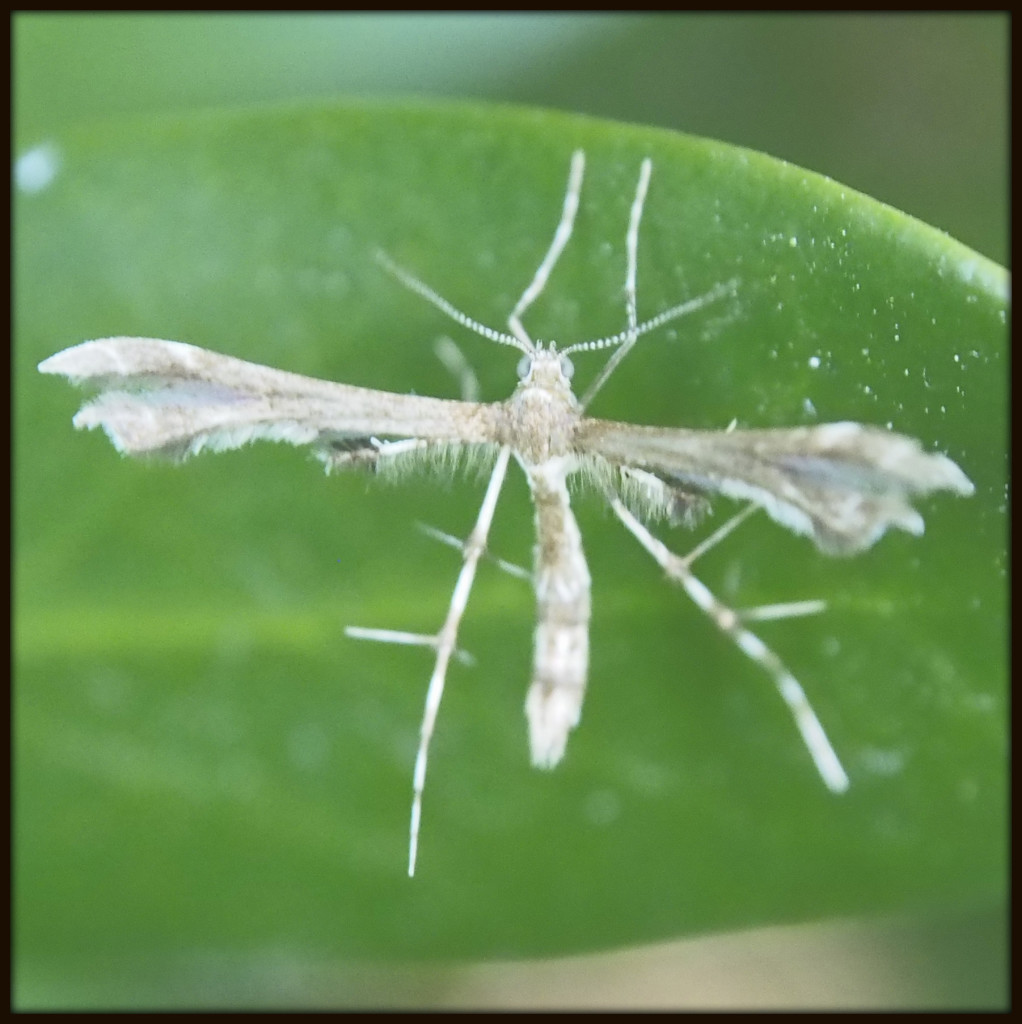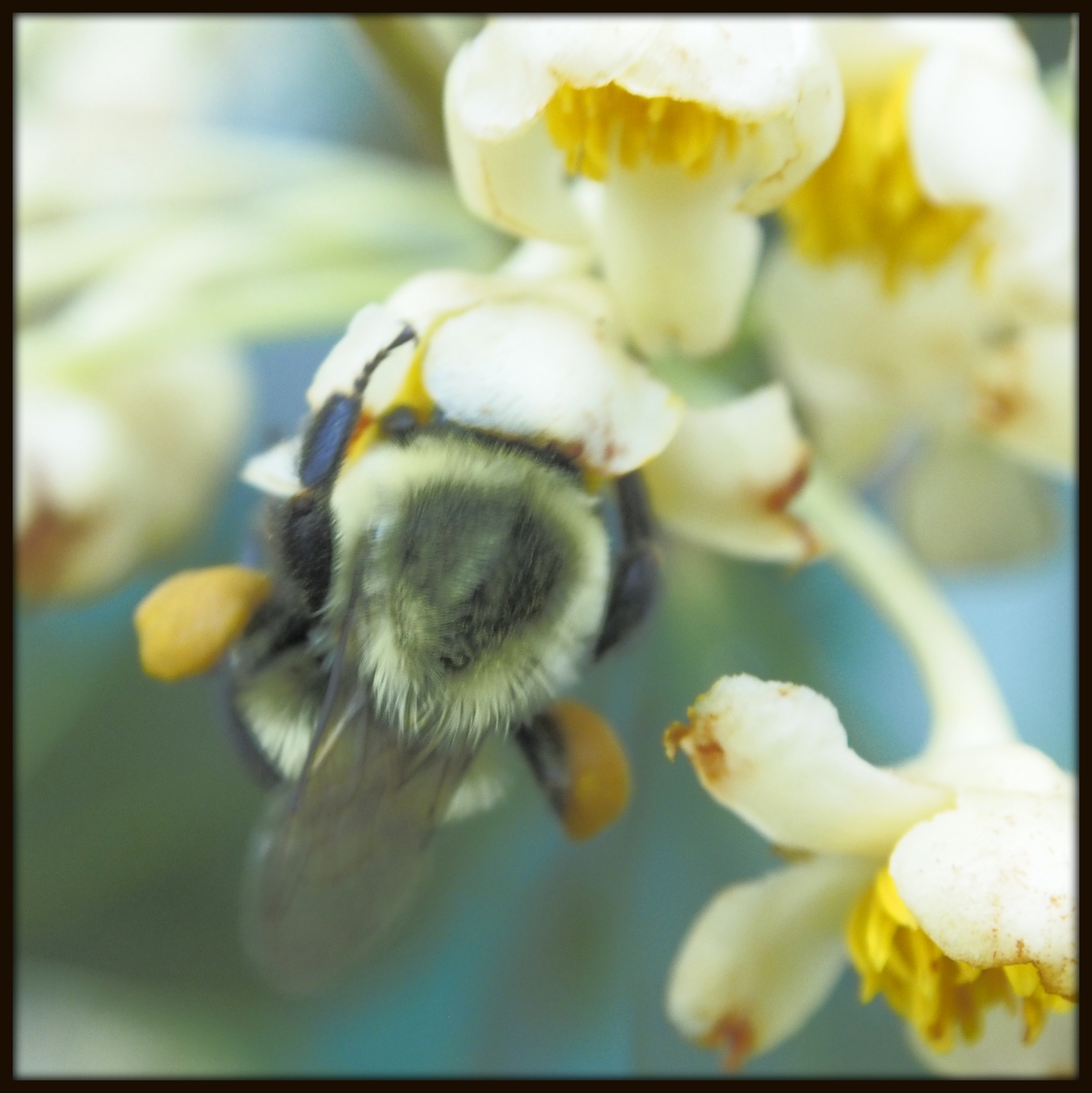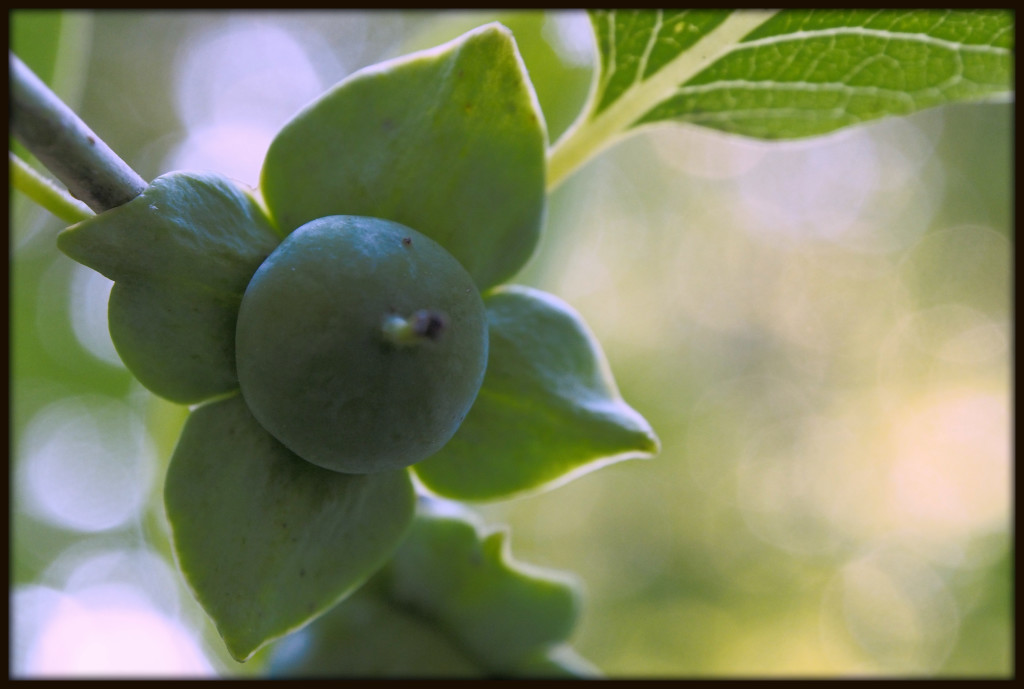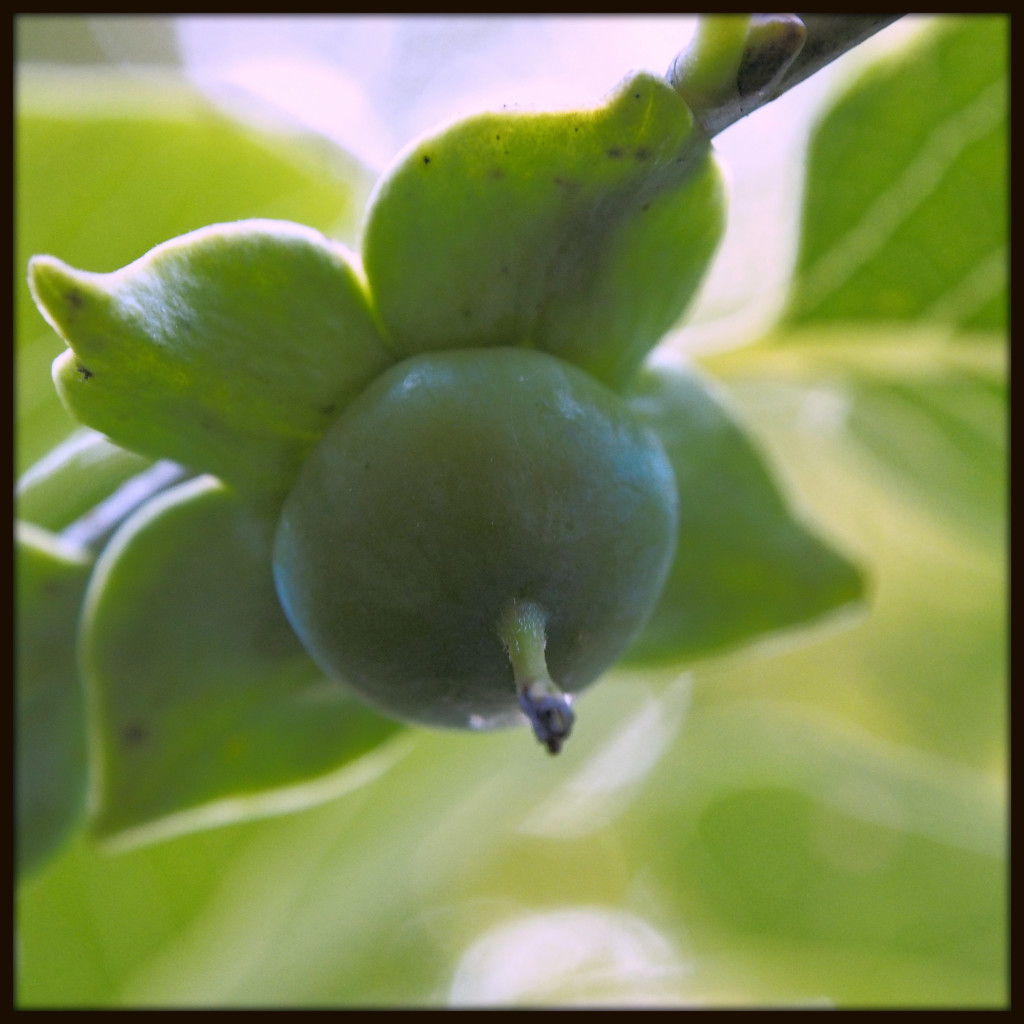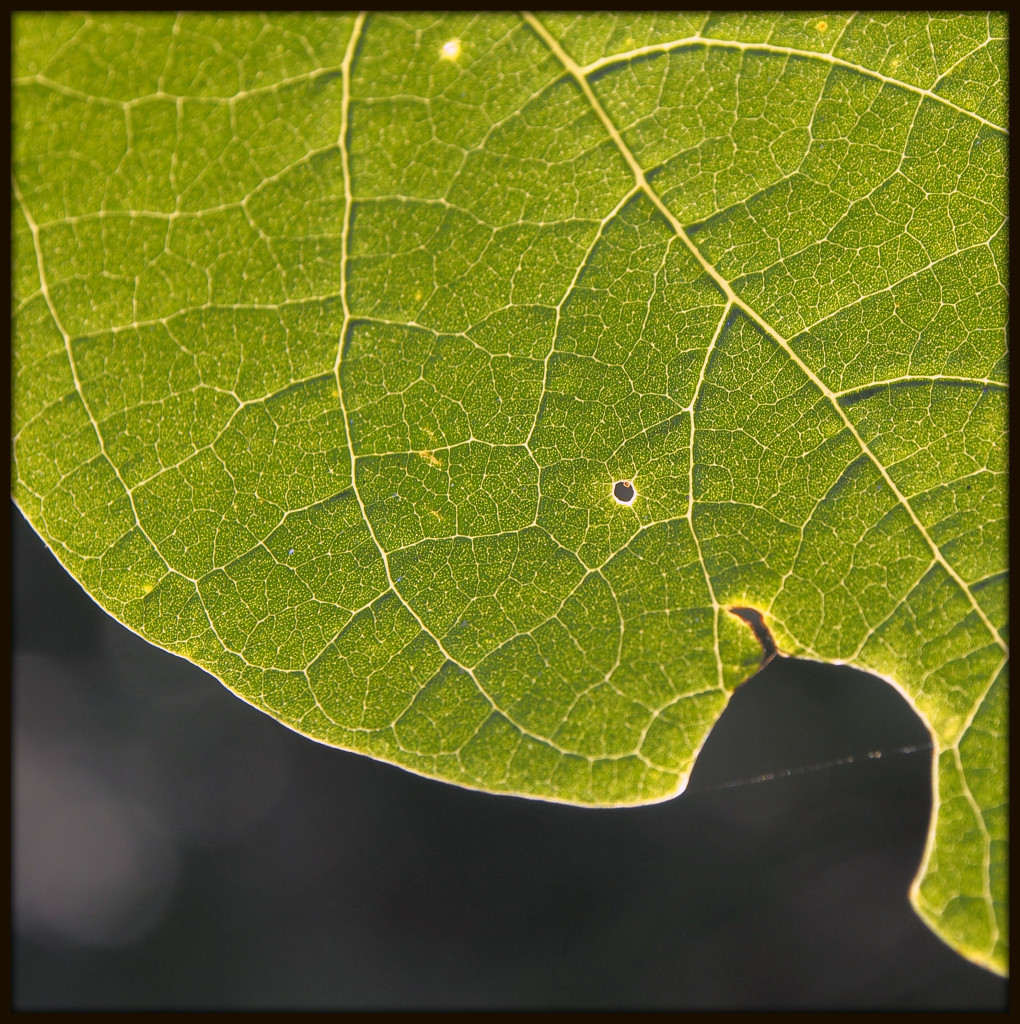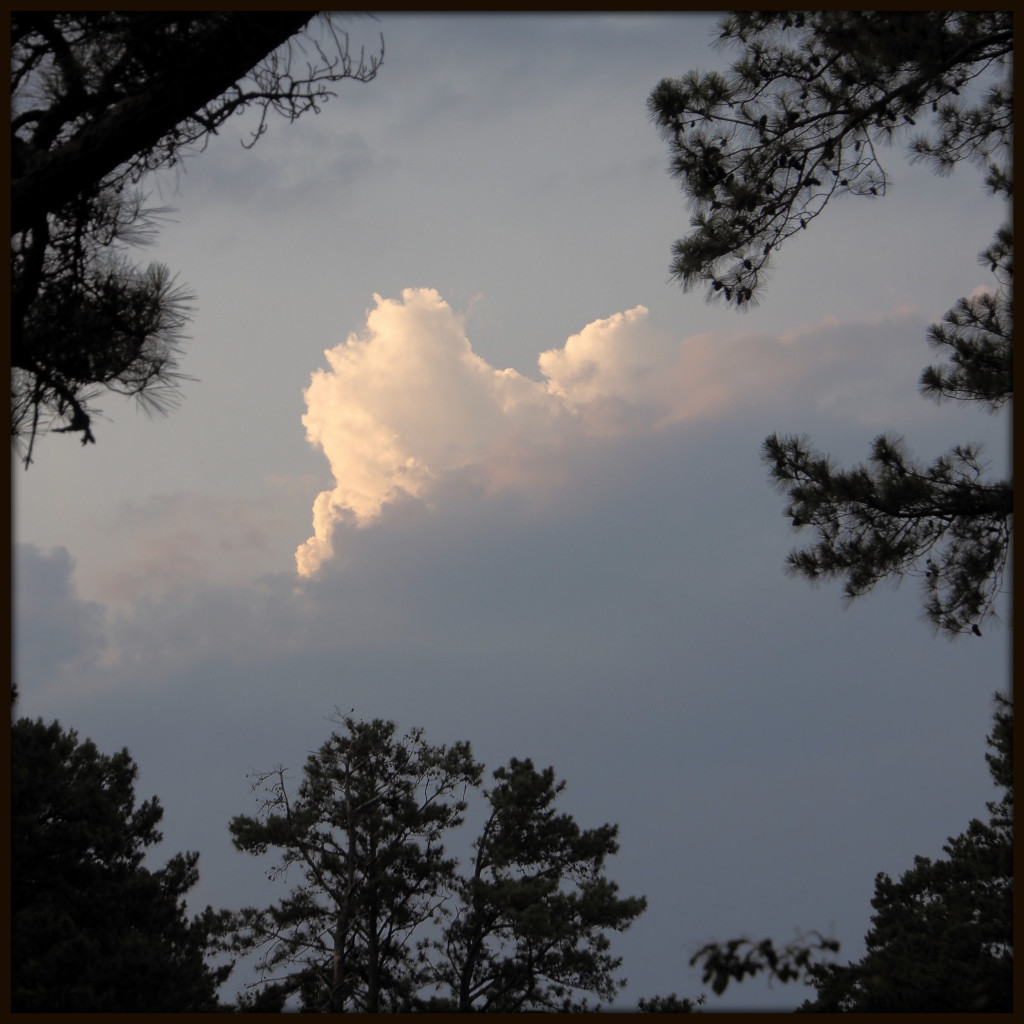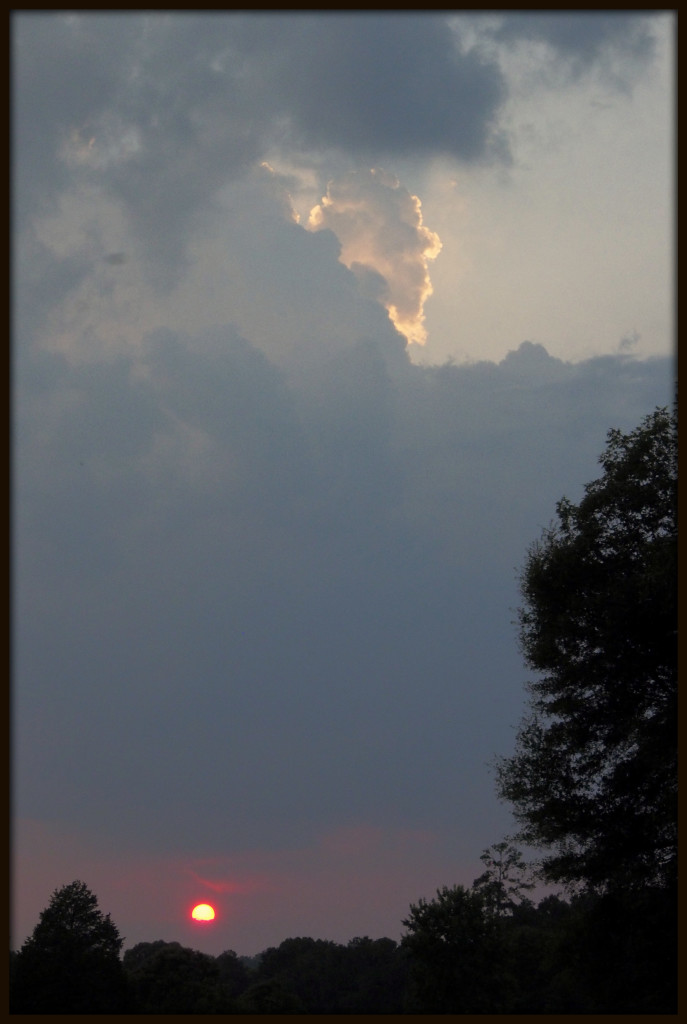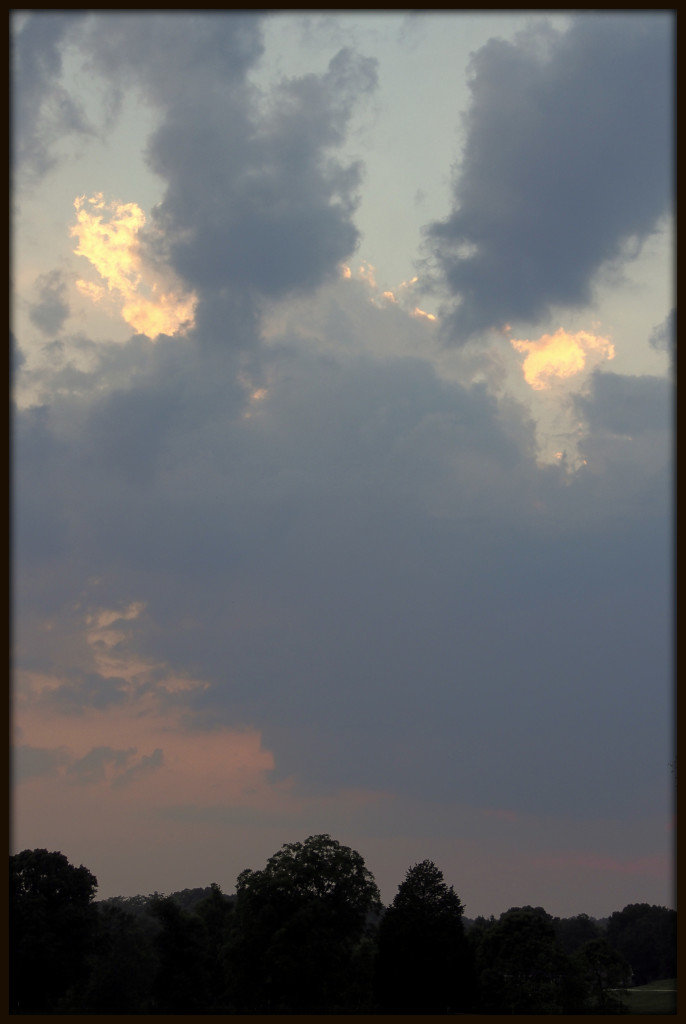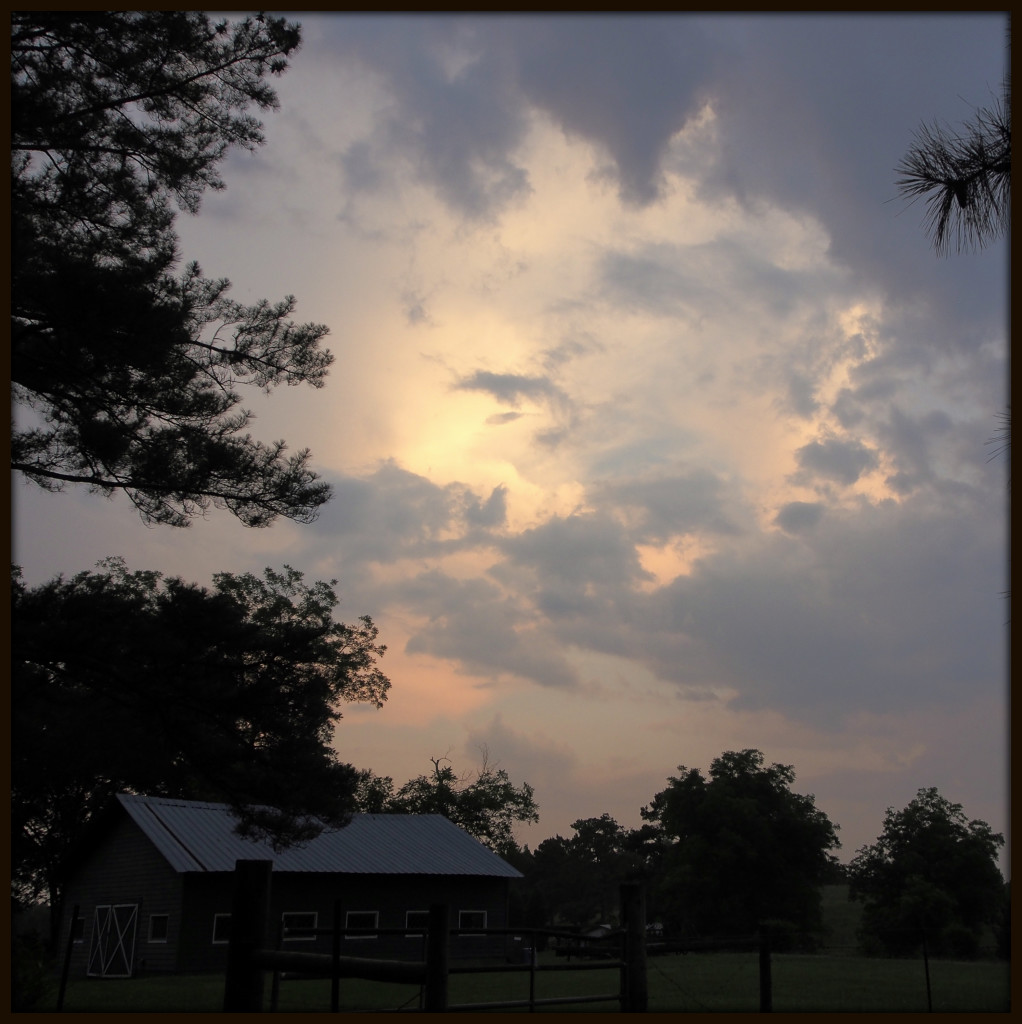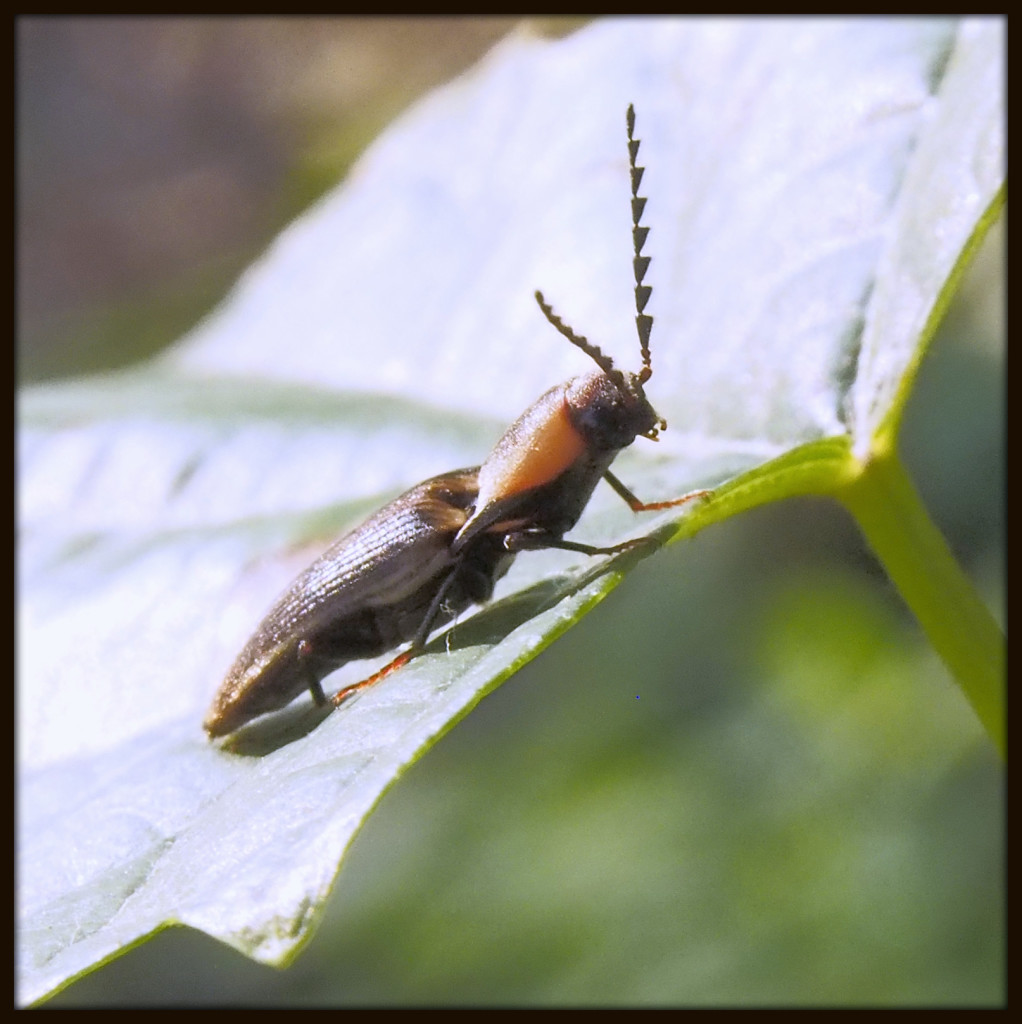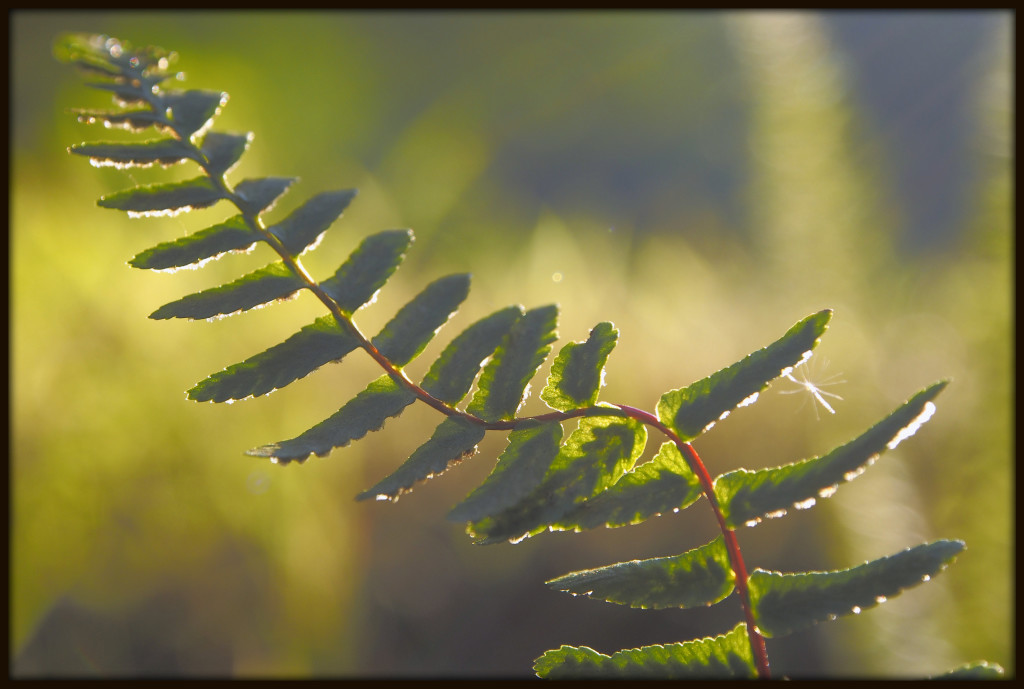Where Piney Woods Church Road meets Hutcheson Ferry Road, at the turn-around point in my daily walk, there is a shrub that forms a long hedge about ten feet in height. I have no idea what the plant is, though I suspect it is some bit of landscaping that was planted long ago to shield the adjacent residential property. The shrub is rather nondescript, with small untoothed oval leaves in abundance. At the moment, it is in bloom, and at last I have found the courage to photograph it (the shrub does appear in one earlier photo of a mockingbird from April, though). Ironically, while intent on photographing the flowers, I also took an intriguing semi-abstract macro shot of the base of several leaves. A neighbor told me that when it is in bloom, bees swarm all around it. I saw no bees there today, though the flowering is just getting underway.
With help from folks on the Facebook Plant Identification page, I was able to determine that this plant is Clayera (Ternstroemia gymnanthera), an evergreen shrub native to China and Japan, and commonly planted in hedges throughout the Southeast.
